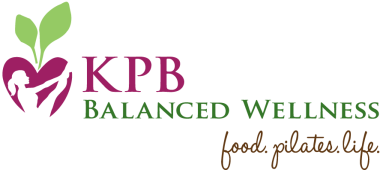Think back to your early days, standing in the lunch line at school or loading up your dinner plate at home. Do you remember being told to have a vegetable on your plate, a starch and a protein? Maybe you’d have a salad on the side. This vision of how our plate should look is pretty in-grained into our heads. But if I could go back and re-write the rules just a little, I’d like just about everyone to incorporate one thing.* Every day.
Cultured foods.
If we take a moment to look at traditional cultures and their traditional foods, each one has fermented foods included. Germans have eaten sauerkraut historically to combat ulcers and digestive problems. Kefir and yogurt were made throughout Europe and incorporated daily. Households in India make lassi and Israeli’s make leban, both their own forms of cultured dairy. Asian cultures use pickled daikon radish and kimchi as condiments. Russians make kvass. African cultures make fermented cassava products that end up making up about 50 percent of their calories each day!
Somehow without peer-reviewed, double blind studies, every culture used fermented foods as a way to preserve their own health. Now science is taking more notice of the microbiome and its role in our overall health. The beneficial bacteria found in those cultured foods are proving in the lab what traditional cultures knew all along.
Cultured vegetables are fermented with the use of lactic-acid producing bacteria such as the well-known strain lactobacillus. These lactic-acid producing bacteria inhibit the growth of disease-causing microbes. Some strains are even considered ‘soothing’ such as L. Plantarum found in sauerkraut explaining its use in those with any form of digestive distress. Bacteria found in traditionally prepared yogurt such as L. bulgaricus and S. thermophiles have also been shown to prevent and reverse bacterial infections.
Research is still ongoing as to just how many ways probiotics support us, but here is what we know so far:
- Probiotics interact with dendritic cells to prevent disease.
- Probiotics affect the adaptive immune system to help fight disease.
- Probiotics may help correct gut dysbiosis by competing for nutrients, secreting antimicrobial compounds and by preventing adhesion of other bacteria on the enterocytes in your gut.
- Probiotics may help prevent cancer through its promotion of Th1 cell development.
- Probiotics affect the tight junctions in the gut, thereby reducing intestinal permeability.
By eating probiotic rich food, we ultimately strengthen our entire gut flora and then we get to reap these benefits:
- Healthy gut flora produces vitamins K2, B1, B2, B3, B6, B12, pantothenic acid, folate, and even various amino acids.
- Healthy gut flora ensure appropriate function of the lymphocytes, secretory IgA, and phagocytes to protect the cells from invaders.
- Healthy gut flora ensure the neutrophils and macrophages are able to swallow viruses, toxins and bacterial and cellular debris to destroy and eliminate them.
- Healthy gut flora ensure the cytokines are able to fight off viral infections.
- Healthy gut flora allow us to properly eliminate old hormones such as estrogen to ensure we aren’t re-circulating them and adding an additional burden to the liver.
- Healthy gut flora chelate heavy metals out of the body.
- Healthy gut flora supports healthy brain chemistry by making the neurotransmitter serotonin, known to help produce a relaxed and happy mood.
Many of you probably already take a probiotic and may be thinking, that you don’t need to eat cultured foods. However, most probiotics only contain between 2-9 strains of beneficial bacterial strains. In contrast, kefir can easily have over 30 strains in each batch. And an analysis of several sauerkrauts yielded 686 probiotic bacterial strains! (Please note, this does not mean any one batch had all 686 strains, each batch is highly variable depending on how and where it was fermented. This just shows the possibility of a very wide diversity of strains in each batch.)
We may not know exactly what all of those strains do for us yet, but what we do know is that a wide diversity of beneficial strains IS better. The greater the diversity of beneficial bacteria in your gut, the stronger your immune system will be. (Which is why I still recommend taking a probiotic each day in addition to eating your probiotic foods.)
Interestingly, beneficial bacteria typically don’t stay in your gut permanently. Instead, they just hang out for about 12 days. They come in, do some house cleaning and then leave. Which brings me back to my point at the beginning.
Cultured foods should have a spot on your plate every day.
Just a bite or two per meal is all you need. (We do better with continual inoculations of beneficial bacteria throughout the day rather than one dose all at once.) With the booming popularity of cultured foods, they are becoming easier and easier to find in your local grocery store. Not only that, the variety in options is also growing. So, you can taste test your way through your probiotics and find one that you like. Personally, I love any I can find with ginger and if you like a little spice, find ones with jalapenos. (The ones with the jalapenos are how I get my husband to eat probiotic foods too.) Delicious!
*Cultured foods are contraindicated for those with histamine intolerance in the early stage of healing. But, probiotics are an essential part of the healing process. Work with your practitioner to make sure you are getting the right ones.
References:
Ballantyne, Sarah. (2013). The Paleo Approach. Las Vegas: Victory Belt Publishing.
Campbell-McBride, N. (2011). Gut and Psychology Syndrome. Cambridge: Medinform Publishing.
Hyman, Mark. (2009). The UltraMind Solution. New York: Scribner.
Lipski, Elizabeth. (2012) Digestive Wellness 4th Edition. New York: McGraw Hill.


